
FLORIDA
OF THE BRITISH
BRITISH COLONIALISM IN FLORIDA 1763-1783
The British immediately divided Florida
into two distinct colonies with the Apalachicola
River as the boundary.
St. Augustine remained the capital of
East Florida, while Pensacola became the
capital of West
Florida. With poor road transportation and an enormous
voyage around the Florida Keys, the new
arrangement of two separate colonies allowed more effective administration than
the Spanish system.
The two Floridas
were Royal colonies governed by an appointed governor with a lieutenant
governor and a chief justice as primary staff members. The Crown also selected
a council to serve as the colony's upper house while British leaders promised
that an elected lower house would be chosen once the colonies developed a
population.
Both
colonies started as marginal endeavors, and like the previous Spanish
governors, Florida's
officials were obliged to save money from the contingency fund to keep public
services operating. The English, however, had one major advantage over the
Spanish: the ability to recruit permanent settlers, particularly families to
the New World. The British Parliament
cooperated by setting a goal of channeling migration away from the Indian lands
west of the Appalachians to newly acquired Florida. The Proclamation of 1763 outlawed settlement west of the Appalachians
while promoting Florida
as a new area of British colonization..
Unlike
agrarian Spain, England had strong desire to develop Florida trade. The London Board of Trade advertised 20,000 acre lots to any
group willing to enter Florida.
The land, however, had to be settled within ten years with one resident per 100
acres. While the Privy Council in London
granted land titles, pioneer families could gain land grants at the two
colonial capitals. Former British soldiers were eligible for special grants.
Each pioneer settler was given 100 acres of land and 50 acres per family
member. To recruit Southerners, slavery was allowed.

The wars
with France
had nearly bankrupted the government. The British Governors had to keep its
staff at a minimum: a secretary, an attorney general, a surveyor, a registrar
of titles, a trade agency, an Anglican clergyman, and two school teachers made
up the payroll. Careful use of the contingency fund might allow for the
additional recruitment of a coroner, a jailer, a clerk of court, and Indian
agents. Any new requests took six months to gain approval from London. 
Each Florida was given a
single regiment of professional soldiers, good protection for the town folk,
but these men were also hired to guard the massive frontier from Indian attacks
and the coast from pirate invasions. The Governor had to summon the entire male
population into a state militia to
assure security. Since most settlers came from England,
Florida, like Virginia, made the Church of England
(Anglican) the official state religion.
JAMES GRANT OF BRITISH EAST FLORIDA
No one did more to increase Florida's
population than JAMES
GRANT, the Governor of British East Florida.
During his administration, the Indians signed the Treaty of Fort
Picolata
which set boundaries between the two peoples. Philadelphia
botanists John and William Bartram
visited East Florida and reported the Timucuan villages were peaceful and prosperous under
Grant's rule.
Grant's
ability to recruit was reflected on the growth of the two colonies. East
Florida granted 2,856,000 acres to West Florida's
meager 380,000 acres. Those who entered East Florida
were predominately Europeans or Southern planters who regarded the region an
extensive of the Atlantic coastal plain. West Florida had to rely on pioneer
settlers from sparsely populated Alabama and
western Georgia.
It was
hoped that individual families who enter the region without the dependence of
grants from London.
Of 114 grants issued in 1776, only 16 families actually settled in Florida. More came to Florida by flatboat,
settled a riverside homestead, and never reported to the British authorities.
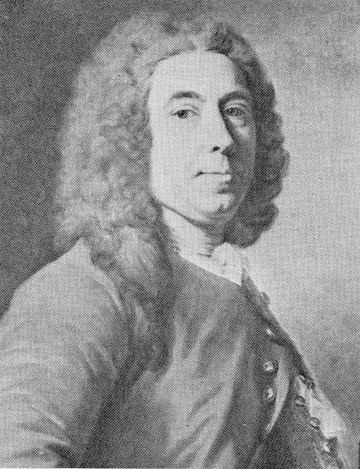
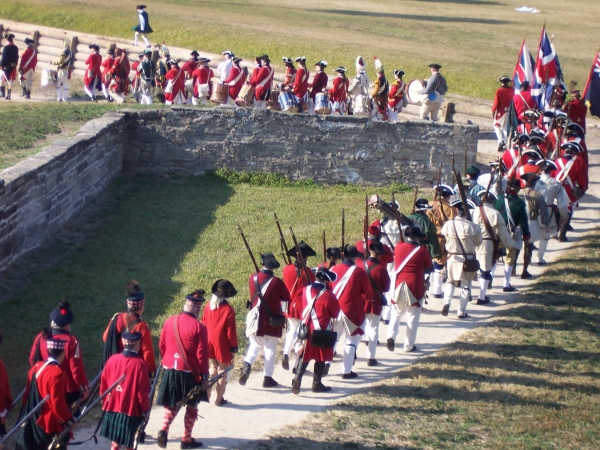
James Grant Developed The Port of Saint AUgustine
COLONIAL ATTEMPTS IN EAST FLORIDA
Grant recognized that rapid growth needed more than small homesteaders;
East Florida needed some major farming
developments. Grant himself built an estate outside St. Augustine, called
"The Villa", and promoted the cultivation of cotton and indigo.
One of his
first recruits was DENYS ROLLE, a Londoner inspired
by James Oglethorpe's success in Georgia bringing debtors into that
colony. Rolle brought in a collection of poor, unemployed, and petty criminal
settlers to a large plantation on the St. John's River.
Rollestown was an agricultural flop. Unlike
Oglethorpe's hand-picked farming colonists, Rolle
discovered his urban workers could not adjust to the hard labor and
inhospitable conditions of an isolated village miles
in a harsh tropical wilderness. 
A more
original program of colonization was developed by Grant's friend and world
traveler DR. ANDREW TURNBULL. Turnbull
suggested that Florida would be an ideal spot for impoverished Greek, Italian,
and Minorcan peasants Turnbull had seen in his
Mediterranean travels. Certainly the climate of Florida would be more suitable to them than Rolle's Englishmen.
With this
incredulous dream and a land grant of 60,000 acres, Turnbull sailed to the
southern coast of Turkey
where Greek farmers, once the envoys of ancient Greek civilization, lived under
Turkish rule. He convinced many Greeks that Florida offered religious freedom and
greater success in sugar production.
On the
return voyage, Turnbull recruited many Italians and Minorcans,
and arrived in St. Augustine
with ships filled with 900 settlers. Governor Grant had hardly anticipated so
many new arrivals and realized Turnbull's "New Smyrna Colony", located down the
deserted Atlantic coast did not have enough food and shelter.
The
Turnbull colony was in trouble from the start. The English population
considered the Catholic Minorcans and Italians to be
potential allies of the Spanish in Cuba. Even more unfortunate, the
three cultural groups began to fight among themselves. Used to a mountainous
climate, the Greeks and Italians suffered in the hot Florida humidity. None of them had grown sugar nor was Turnbull
had effective businessman. He treated his indentured population like slaves.
The Minorcans fled to St. Augustine and others demanded to return
to their homeland. Dr. Turnbull's dream had collapsed.
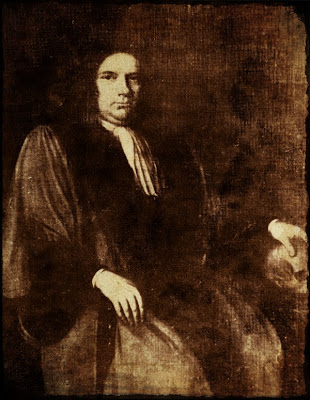
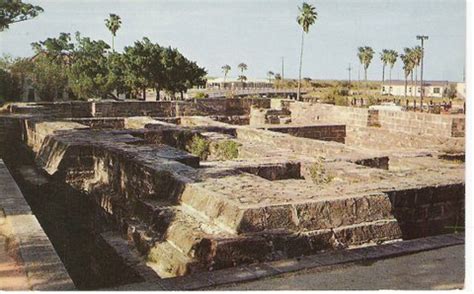
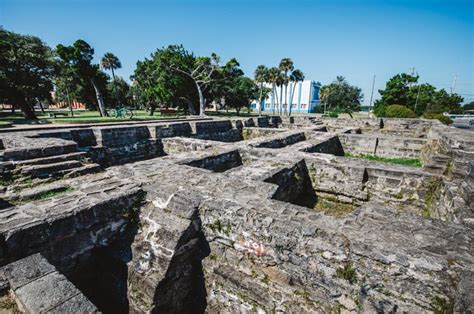
Remains of the Turnbull Colony at New Smyrna
JOHN FORBES OF BRITISH WEST FLORIDA
While West Florida
lacked large scale migration, but it did have the FORBES PURCHASE.
In 1776 three American Loyalists, Willliam Panton, Thomas Forbes, and John Leslie, fled into British
Florida and started a trading company, Panton, Leslie and Company. Brother John Forbes was
chosen to be the business manager. When England
left Florida
in 1783, Panton and Leslie remained as agents for the
Indians in behalf of the Spanish administration. In exchange of cash payments
of debts, hundreds of Creek Indians living in West Florida gave the Panton Company over a million acres of land along the ApalachicolaRiver.

West
Florida was larger than East Florida and extended to Lake Pontchartrain,
Louisiana, but its leaders like George Johnstone had
serious problems with the increasing migration of Indians into the region.
Farmers and lumbermen would endanger the profitable fur trade with the Indians.


The
Spanish honored these land exchanges, but when the United
States finally gained Florida
in 1821, the U.S.
Congress denounced the Forbes Purchase. John Forbes recruited some American
investors and contested his land rights in the American courts. It was not
until 1835 that the courts yielded the land to Forbes and the American-based Apalachicola Land Company.
Unfortunately, most of the property was marshland unfit for sale.
The Forbes Purchase was Florida's Largest Land Grant
TOWN LIFE IN BRITISH FLORIDA
style='mso-bidi-font-weight:normal'>Florida
's few towns had larger populations than
the years of Spanish rule, but there was little change in the two decades when England operated the two Floridas. St. Augustine remained a
village of narrow streets lined with squat coquina houses and walled courtyards. The English residents,
at first ignorant of Spanish architecture, remodeled the houses until they
discovered the Spanish design kept out the winter wind and the summer
mosquitoes. They quickly adopted Spanish customs and a tropical lifestyle.

British
town life may have lacked some of the urban zest of a Spanish military
garrison, but it had families and some thirty trading ships per year. Tropical
goods and lumber were sent to South Carolina;
indigo dye and naval products to New
York. The work force was still quite limited, but
there was general optimism that British East Florida
would soon develop ties to the Enghlish colonies to
the North. The British also brought in a larger African-American slave populace
for the plantations.
Pensacola
and West Florida, with its sandy, coastal soils, and heavy forests, lagged
behind in development. The region produced no staple, money crops except lumber
and furs. The pioneer homesteaders who entered the area survived on crops of
corn, beans, cotton, tobacco, and rice. There were only a few plantations since
the fertile Tallahassee Hills were considered less secure from the Indian attack
for the frontier farmer.
BRITISH FLORIDA in the AMERICAN REVOLUTION
The outbreak of the American Revolution had a devastating
impact on British East and West Florida, for
its newly arrived population and its dependence upon English trade, assured
that Floridians would be loyal to the motherland. As the war broke out, the
confused and angry St. Augustine
residents burned effigies of revolutionary leaders Sam Adams and John Hancock. Loyalists easily outnumbered those who supported colonial protests over British trade policies.
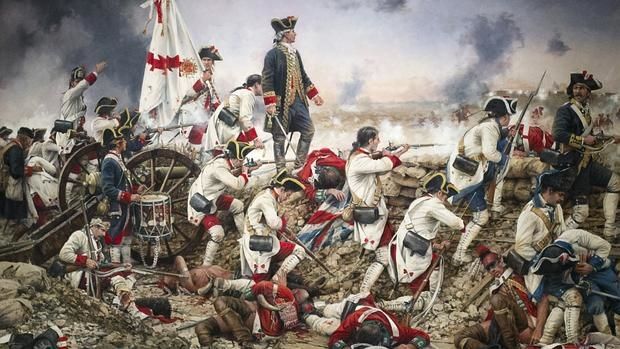
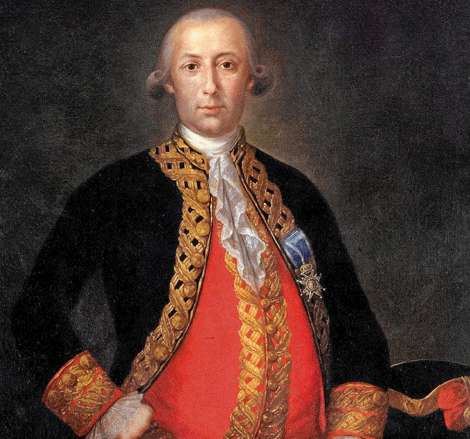
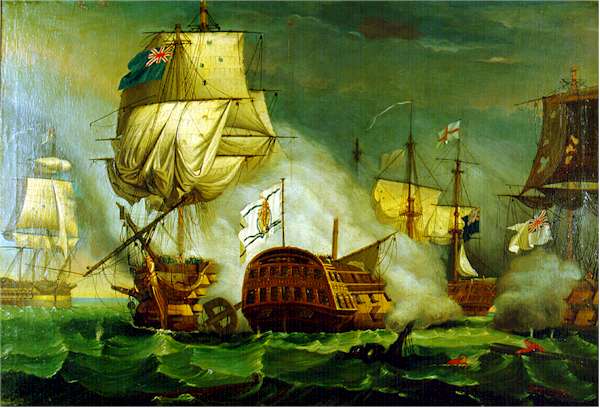
Floridians
hoped the conflict would never reach Florida's shores, but England had decided to utilize Florida as a staging area for British troops
assigned to the South. Florida's warm climate
would accustom British forces to the American heat and Florida could develop supplies for the
British military. The huge fort at St.
Augustine was even turned into a prison camp.
The harsh
and conservative Loyalist Patrick Tonyn had replaced the retiring Grant as Governor of
East Florida and his heavy tactics upset
non-English immigrants. Tonyn did muster colonists
into the East Florida Rangers, a
militia that successfully halted American raids over the St. Mary's River.
In British
West Florida, there was general disorder.
Indians fled into Pensacola
and GovernorGeorge Johnstone
was recalled for disrupting military activities. In 1781 a Spanish fleet under
Bernardo de Galvez sailed into Pensacola Harbor
from New Orleans
and bombarded the city. His mission was limited, but it terrified the small
community. Spain used this attack to demand the return to Spain of Florida at the end of the American Revolution.
The
British occupation of Savannah and Charleston placated much of the fear in British Florida until the stunning defeat of Cornwallis at Yorktown. The Revolution was over. The revolting colonies
had won even if there was only a truce. Loyalists poured into St. Augustine from across the south. They
would have made the city an economic boom town, but nearly all of them were
headed to the Bahamas,
Bermuda, or England.
It was not
until the Treaty of Paris
in 1783, that Floridians discovered their fate. To the shock of most Floridians, Florida was
not going to be part of the United
States. Southerners were even more shocked
that their delegate in Paris had missed the
ruling on Florida.
With that news, most of the English in St. Augustine
became to pack for England
or the British Caribbean, leaving the Catholic
Minorcans in a deserted town.